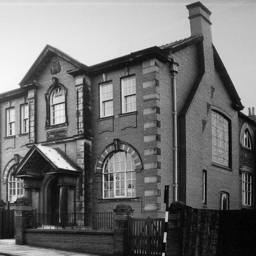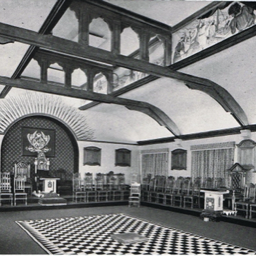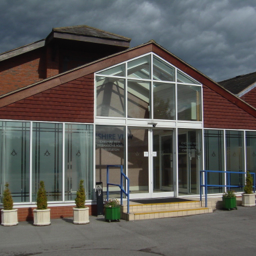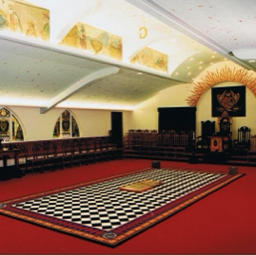Sponsors
Thompson returned to England full of passion, and a desire to see his vision of an all embracing Masonic Lodge which would encompass and encapsulate Freemasonry on a grand scale. He was editor of The Birkenhead News and also of The Northern Freemason, apparently the only paper of its kind in the North of England; he was also studying to become a barrister. It was a time when Freemasonry was flourishing and lodges were being founded at a great rate; Thompson was certainly playing a leading role in this Masonic development as he was a Founder and First Master of Lilly Ellis Lodge (3236), a Founder and First Master of Randle Holme Lodge (3261) and a Founder and First Master of Bohemian Lodge (3294).
Bohemian Lodge (3294), a lodge which had only been consecrated itself on 29 April 1908, became the Sponsor or supporting lodge of Thompson’s brain-child, the Lodge of King Solomon’s Temple (3464). It was a lodge which sprang from dramatic beginnings – in more ways than one – its Mother Lodge was the Liverpool Dramatic Lodge (1609) and the Founding Brethren of Bohemian Lodge were mainly members of the acting profession centred principally at The Argyle Theatre Birkenhead; Harry Lauder being one of its most famous. George Roby was another famous Joining Member.
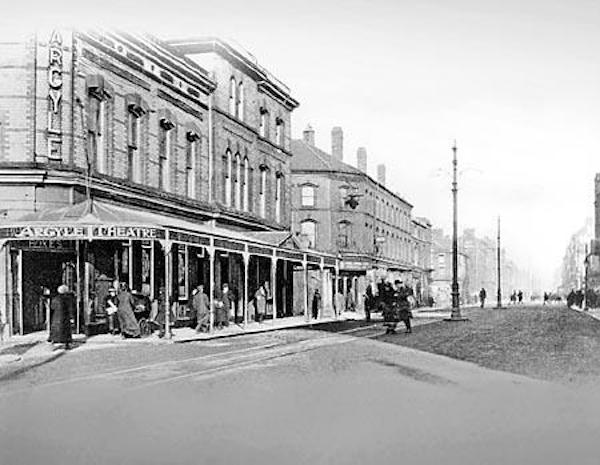
The Argyle Theatre
The Argyle Theatre was opened in 1868 as a Music Hall and Variety Theatre where it became one of the best known in the country. Sir Harry Lauder began his career there and other famous names who appeared there include Dan Leno, George Roby, Vesta Tilly, Stan Laurel, Bud Flanagan and Charlie Chaplin. It was the first theatre to host radio broadcasts which were sent out all over the Commonwealth on short-wave radio and it was the only theatre at the time to broadcast to America. It was the leader, outside of London, in the showing of ‘Vitagraph Pictures’, Thomas Edison’s early form of cinema and it even showed footage in 1910 (the year in which the Lodge of King Solomon’s Temple was Consecration) of the funeral of King Edward VII. It is perhaps not surprising that such an enterprising theatre should be at the centre of Bohemian Lodge which was about to found such a special and unique Masonic creation – the Lodge of King Solomon’s Temple (3464).
Bohemian Lodge (3294) was probably one of the top ‘Music Hall’ Lodges in the country – it was a ‘who’s who’ of ‘Variety’. It contained at least nine of the greatest variety artistes the world had ever known i.e. Harry Lauder, George Robey, Fred Kitchen, George Lashwood, Billy Merson, The Great Roland (Eduard Krause), Horace Goldin, George Prince and Charlie Austin. This is why, in the early years, the Lodge of King Solomon’s Temple had as many as 42 Brethren from the world of show business, at least five being Founder Members. It is interesting to note that in the review Three Cheers in 1913, Harry Lauder was under contract at £800 per week!

Harry Lauder
Sir Henry 'Harry' Lauder, 4 August 1870 – 26 February 1950, was a Scottish singer and comedian popular in both the English music hall and vaudevillian theatre tradition where he achieved international success.
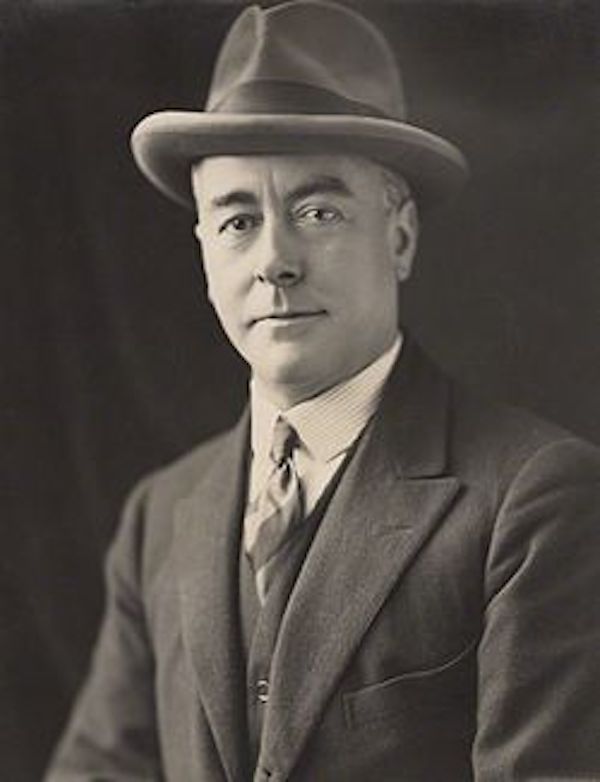
George Robey
Sir George Edward Wade, CBE (20 September 1869 – 29 November 1954), known professionally as George Robey, was an English comedian, singer and actor in musical theatre, who became known as one of the greatest music hall performers of the late 19th and early 20th centuries.
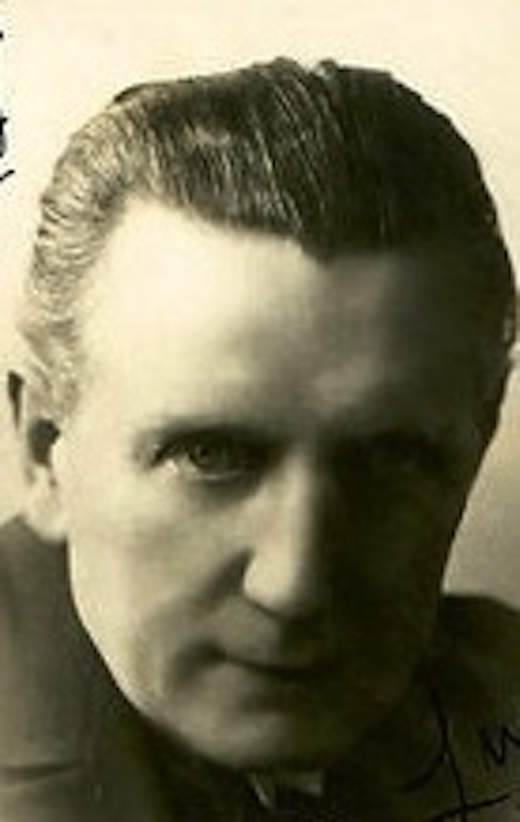
Fred Kitchen
Fred Kitchen was born Frederick Thomas Kitchen was the lead comedian with Fred Karno's company from 1897 to 1910. Charlie Chaplin, managed by Karno, was influenced by Kitchen's comic style, his splayed walk and scruffy costume. Chaplin commented 'A part of the [tramp] character was inspired by Fred Kitchen, an old fellow-trouper of mine in vaudeville. He had flat feet.'
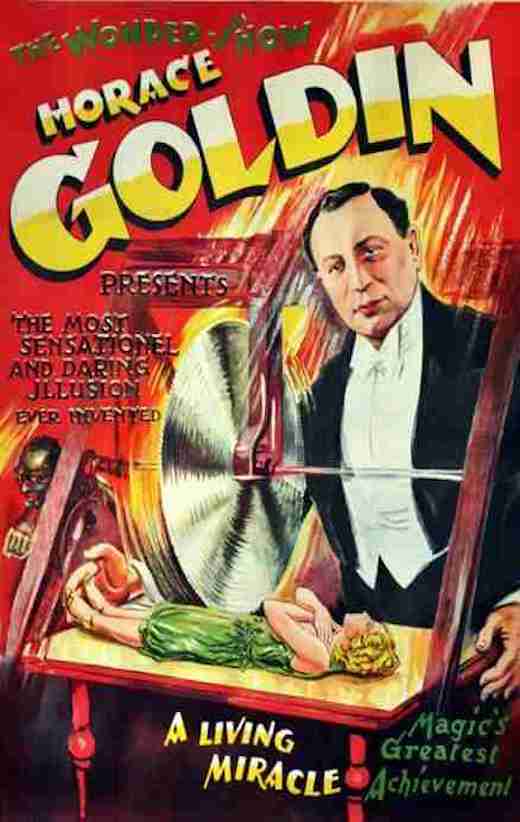
Horace Goldin
Horace Goldin (17 December 1873 – 22 April 1939) was a stage magician who was noted for his lightning fast presentation style and who achieved international fame with his versions of the sawing a woman in half illusion.
Not only was Bohemian Lodge (3294) receiving Joining Members but it was also initiating by the ‘job lot’! At the March meeting in 1912, two Degrees were worked; 5 Fellow Crafts were raised at 12.30 pm followed by lunch at 2.00 pm after which at 3.30 pm W. Bro. A.J. Shelley-Thompson addressed the Brethren on ‘The Symbolism of the Third Degree’ and then 4 Candidates were initiated. What one might call a full day – but then the variety artistes would go straight off to the theatre to ‘perform’ again! The year 1913 marked the start of the slow and painful death of the Music Hall and heralded the dawn of the next great form of entertainment for the masses, the Cinema.
Not all the Bohemian Brethren ‘trod the boards’. Two early Brethren, Frederick Bulmer (a dramatist, who was proposed as a Joining Member of the Lodge of King Solomon’s Temple 3464 on its Consecration night) and William Simpson Cross were both members of different Lodges in Israel. It could be speculated that these two brought to the Lodge an ‘affinity’ or connection with the Jewish faith and in some way assisted Shelley-Thompson in his endeavours.
As Jerusalem was under Turkish rule, a petition, hand written on velum, was prepared ready to send to His Imperial Majesty Ghazi Sultan Abdul Hamd Khan, Sultan of Turkey and Protector of the Holy Cities, seeking permission to found and consecrate a lodge on the site of the original Temple at Jerusalem. It would appear that this petition was never actually sent because Grand Lodge was not happy with the political climate existing in the Holy Land at the time.
The Lodge of King Solomon’s Temple has, amongst its archives, a large photograph album containing many signed photographs of the illustrious masons who were either Founders of the Lodge or who later became Honorary or Joining Members. At the front is the following short introduction:
‘During the early part of the year 1909, W. Bro. A.J. Thompson, F.R.G.S., P.Prov.G.W. of Cheshire, visited Jerusalem. Amongst the small English Colony in the ancient city he found several members of the Craft, and was by them conducted over the Quarries of King Solomon. There are to be seen blocks of stone already marked out by the picks of the workmen, but never finally completed.
Here in the great City sacred to hundreds of thousands of Freemasons there was no Lodge. Immediately upon his return, W. Bro. Thompson set to work in the hope of forming a Lodge to eventually meet and work in Jerusalem.
Owing to the political unrest in the Turkish Dominions, the Masonic Authorities were not inclined to consider an application, but nothing daunted, a petition praying for a lodge to be called The Lodge of King Solomon’s Temple was signed, by 75 members of the Craft from all parts of the world, consisting of brethren of world-wide reputation, and a Warrant was granted to remain in Cheshire until time or circumstances should allow the Lodge to meet in the Holy City itself.
The Lodge was made possible by the great assistance given by W. Bro. Robert Freke Gould, P.G.D. the first Master, W. Bro. W.H. Lever, P.Prov.G.W. the first acting I.P.M. and the cordial co-operation of The Grand Master, H.R.H. The Duke of Connaught, K.G., The Deputy Grand Master, The Right Hon. T.F. Halsey, The Prov. G.M. of Cheshire, Lord Egerton of Tatton, The Deputy Lieut. Col. H. Cornwall Legh, The District Grand Masters of South Africa, New Zealand, and Jamaica, R.W. Bros. D.J. Haarhoff, Lieut. Col. J. Ranken Reed, T.W. Sherlock-Graham, and Sir John Pringle, respectively, W. Bro. B.E. Keyser, P.G.D. Deputy P.G.M. of Herts. Canon Bowen, Deputy P.G.M. of South Wales. Sir Edward Letchworth, G.Sec. F. Broadsmith, Prov.G.Sec. The Lord Bishop of Chichester, P.G.Chaplain, Bishop Gwynne, of Cairo, John Strachan, K.C. P.G.Reg., J.M. McLeod, P.G.Swd.B. General Sir Charles Warren, W. Bro. A.E. Coveney, P.Prov.G.W., D.L. Hewitt, P.Prov.G.W. (Mayor of Chester 1909/11) W. Bro. Canon Yates, A.E. Mitchell, P.M. and 11 other brethren from Jerusalem, Henry Keays Bentley, Captain T.G. Lumley Smith, Joseph Clarke, P.Prov.G.W. etc. etc.
A piece of stone was obtained from the Wailing Place of the Jews at Jerusalem, known as the only remaining portion of the Outer Wall of the Temple of King Solomon at Jerusalem.
The Lodge was consecrated at Chester by the Right Hon. Lord Egerton of Tatton, assisted by W. Bro. H. Cornwall Legh, with W. Bro. R. Cecil Davies, and Owen Jones as Wardens, in the presence of many hundreds of brethren from all parts of the country, on Wednesday, 19th day of October, 1910.
In this album we hope a photographic record will be kept of all the Masonic and Social Functions of the Lodge together with Autograph portraits of the Worshipful Masters from year to year in England, and we trust in the future in Palestine.
We greet all brethren who read this introduction to the album, those who are with us today, and those untold brethren whom the future hold.
We thank all the brethren who have assisted so well to make the Lodge a success, and we send down the years of time our Fraternal Greetings to those untold brethren yet to be, whom the future still hold, and who may read these lines long years after we have passed to the Great Beyond and we ask them to accept our sincere good wishes in the same cordial manner as though we had met them face to face.
R.F. Gould, Worshipful Master
A.J. Shelly-Thompson, Junior Warden
Jos. Clarke, Secretary
H. Keays Bentley, Treasurer
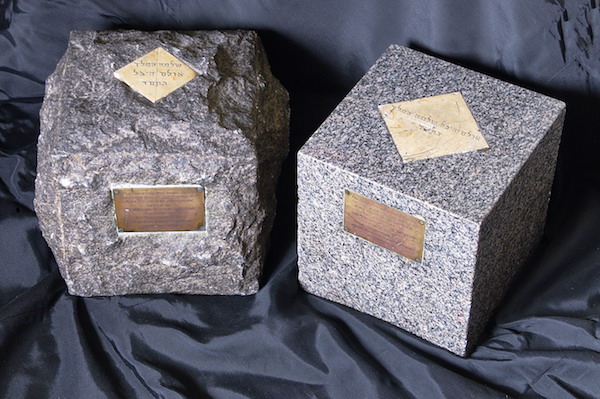
Rough and Smooth Ashlar
The piece of stone referred to, part of the Wailing Wall, was divided into pieces; a piece was inserted into the top of both the smooth and the rough ashlars of the Lodge which can still be seen in the large temple at Christleton. A Hebrew inscription in each inserted piece reads ‘Lodge of King Solomon’s Temple 3464’, whilst on the side of each ashlar is a brass plate.
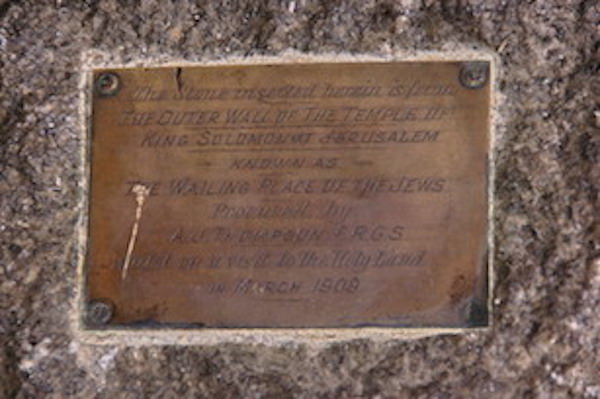
Brass Plate on Rough Ashlar
The inscription reads; ‘The stone inserted herein is from the outer wall of the Temple of King Solomon at Jerusalem known as the wailing place of the Jews. Procured by A.J. Thompson, F.R.G.S. whilst on a visit to the Holy Land in March 1909.’
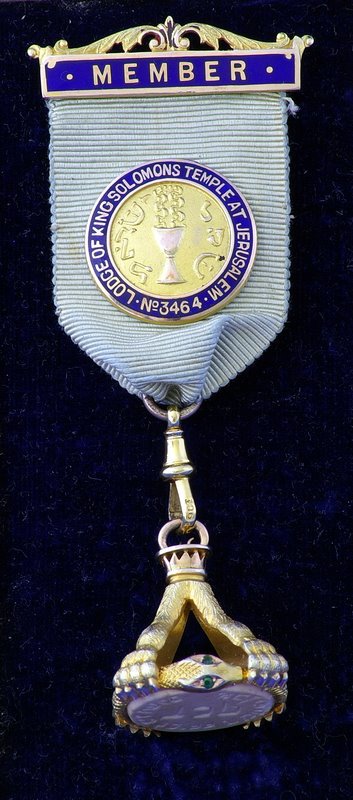
Members Jewel
Smaller pieces were used to create the faces of seals which formed part of the original Founders’ and Members’ Jewels Some of these are still in existence. Each seal was made of gold, shaped with four lion’s paws grasping a coiled snake, the stone face being engraved in Hebrew with the Founder’s or Member’s number and the name of the Lodge. Interestingly, each Jewel is engraved with the words ‘Lodge of King Solomons Temple at Jerusalem: 3464:’ – the ‘at’ obviously pertaining to the fact that the Lodge was initially intending to meet in Jerusalem. It is interesting to note that in the first two years of the Lodge both the Secretary and the Secretary for Foreign Correspondence used their Hebrew number on the Lodge Summons rather than their name i.e. A.J. Thompson (later known as Shelley-Thompson) was ד (No. 4) and the Secretary J.C. Clarke was ד י (No. 14). This was in keeping with the Hebrew connection of the Lodge and at the same time added a certain mystique to the appearance of the summonses. A replica of the jewel was presented to Lord Egerton of Tatton, the Provincial Grand Master, who cordially acknowledged the gift.
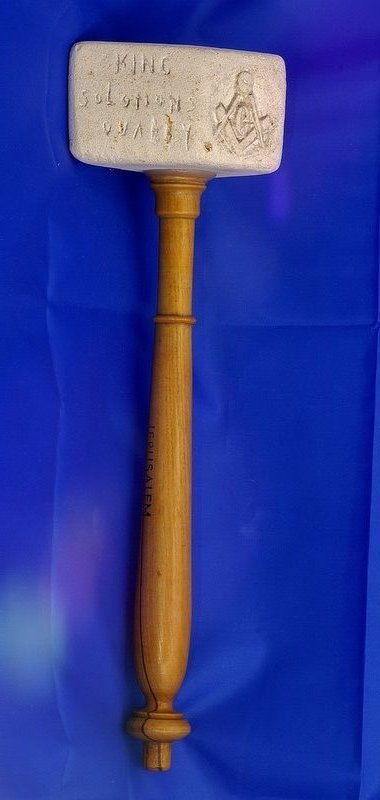
Lodge Gavel
Another piece of the stone, together with a piece of olive wood from Jerusalem presented by W. Bro. A.E. Mitchell was fashioned into a gavel for the Lodge.
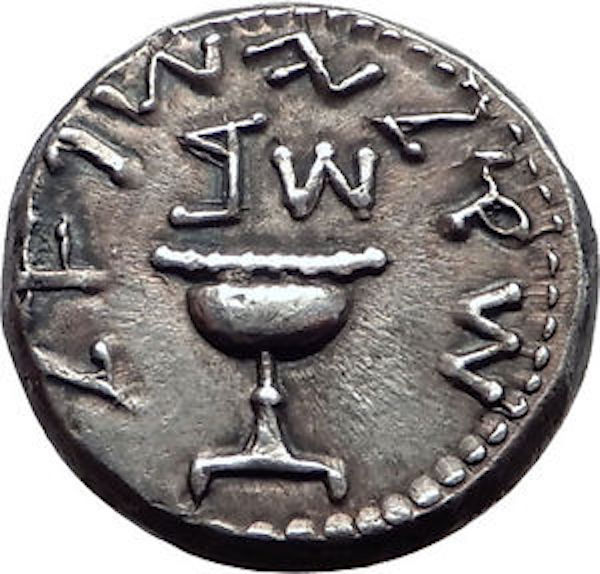
Silver Shekel
The ‘Emblem’ used on the front of all the Lodge summonses is a representation of the obverse (front) of the Silver Shekel coin. These were minted from 66 A.D. as a statement of the Jewish independence from Rome as well as being an announcement of their future ambitions.
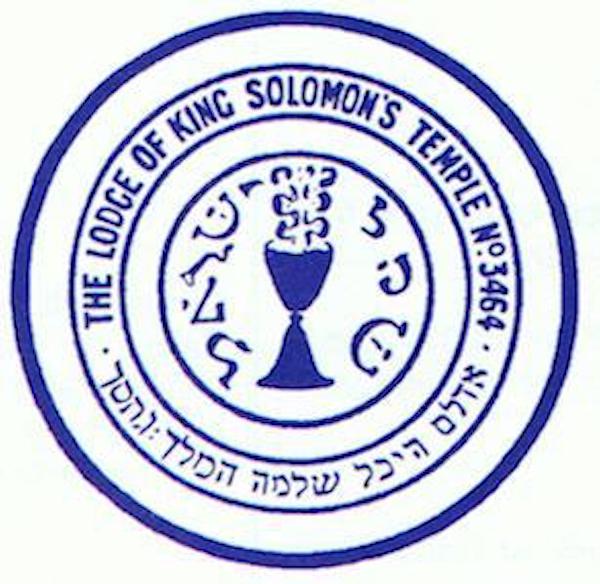
Lodge Emblem
In the centre of the emblem is a chalice together with the Hebrew words meaning the ‘Shekel of Israel’. Simon Maccabaeus took part in the Jewish revolt against the Seleucid Empire and became the first Prince of the Hebrew Hasmonean Dynasty, reigning from 142 to 135 BC. The Hasmonean Dynasty was founded by a resolution, adopted in 141 B.C at a large assembly ‘of the priests and the people and of the elders of the land', to the effect that Simon should be 'their leader and high priest forever, until there should arise a faithful prophet’. In February 135 BC, he was assassinated at the instigation of his son-in-law Ptolemy.
